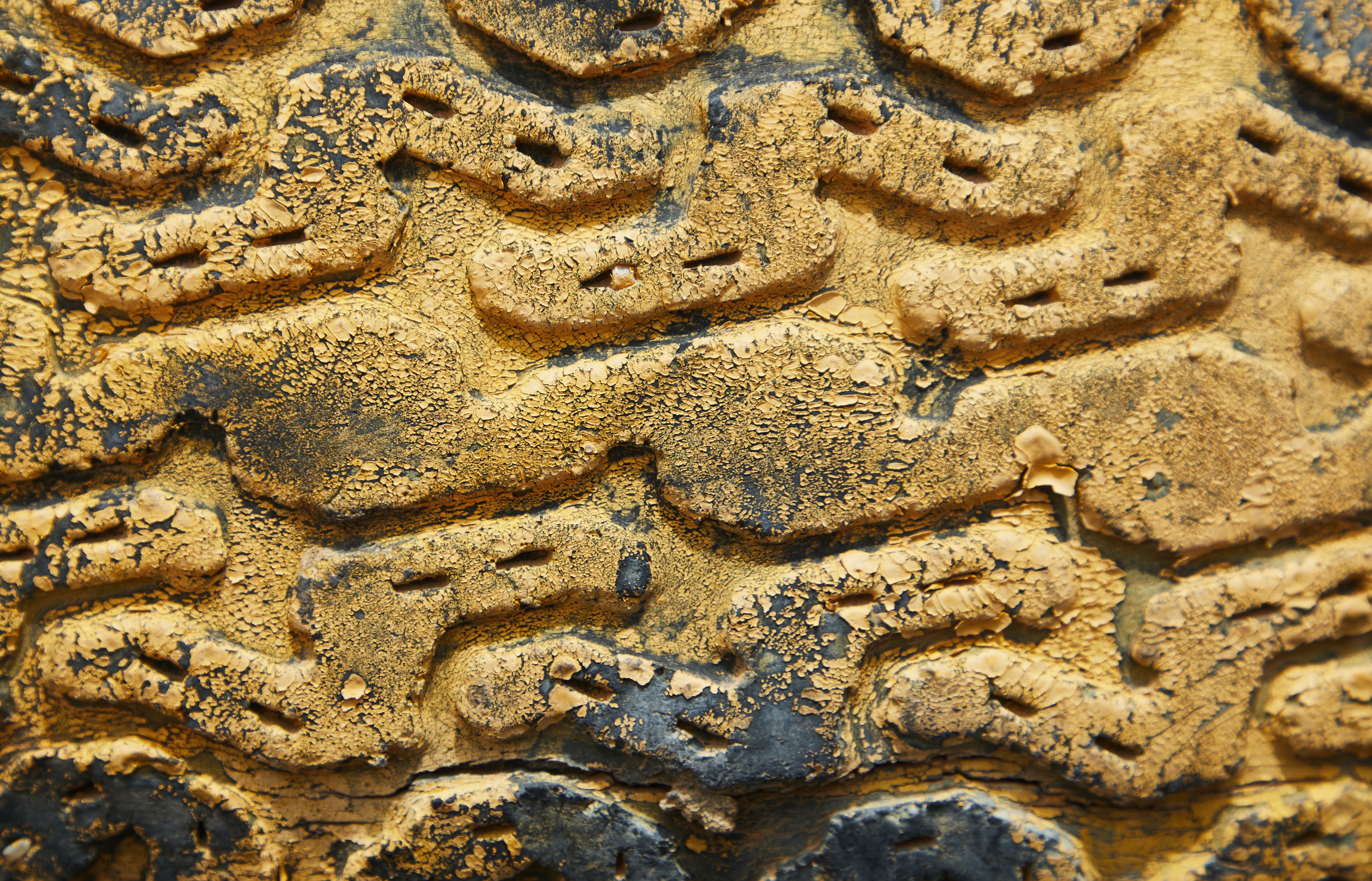 Tire texture image classification using computer vision is the process of identifying different patterns and features in tire textures and classifying them into different categories based on those features. This technique involves using computer algorithms to analyze images of tires, identify different patterns and textures, and categorize them based on certain characteristics.
Tire texture image classification using computer vision is the process of identifying different patterns and features in tire textures and classifying them into different categories based on those features. This technique involves using computer algorithms to analyze images of tires, identify different patterns and textures, and categorize them based on certain characteristics.
The tire texture image classification process using computer vision typically involves several steps, including preprocessing the images, extracting features, and training a machine-learning model.
Tire texture image classification using computer vision has several potential applications, including:
1. Tire Manufacturing: The classification of tire texture images can be used to monitor and maintain the quality of tires during the manufacturing process. This technology can help manufacturers identify defects and improve the consistency of tire production.
2. Tire Wear Analysis: Computer vision-based tire texture analysis can be used to assess the wear patterns on tires, providing important information about the performance of the tire over time. This can help drivers and mechanics understand when a tire needs to be replaced or repaired.
3. Autonomous Vehicles: Tire texture analysis can be used by autonomous vehicles to improve their perception of the road surface. By classifying different tire textures, vehicles can better adapt to changing road conditions and make more informed decisions about steering, braking, and acceleration.
4. Forensic Investigations: Tire impressions left at a crime scene can be analyzed using computer vision techniques to identify the make and model of the tire that made the impression. This information can help investigators identify suspects and solve crimes.
5. Tire Recycling: Tire texture analysis can be used to sort and classify used tires for recycling. This technology can help identify tires that are suitable for reuse or recycling, reducing waste and improving the efficiency of the recycling process.
By classifying tire textures using computer vision algorithms, manufacturers can identify any defects in the tire production process, such as irregularities in the rubber mixture, defects in the tire tread, or problems with the tire’s construction. This can help them take corrective actions to improve the consistency and quality of tire production, reducing the risk of tire failures and accidents.
Furthermore, tire texture analysis can also help manufacturers in research and development, where they can study the tire texture of different materials and designs to create new and improved tire products.
Overall, tire texture image classification using computer vision has the potential to improve tire quality, enhance driving safety, and reduce waste in the tire manufacturing and recycling industries.
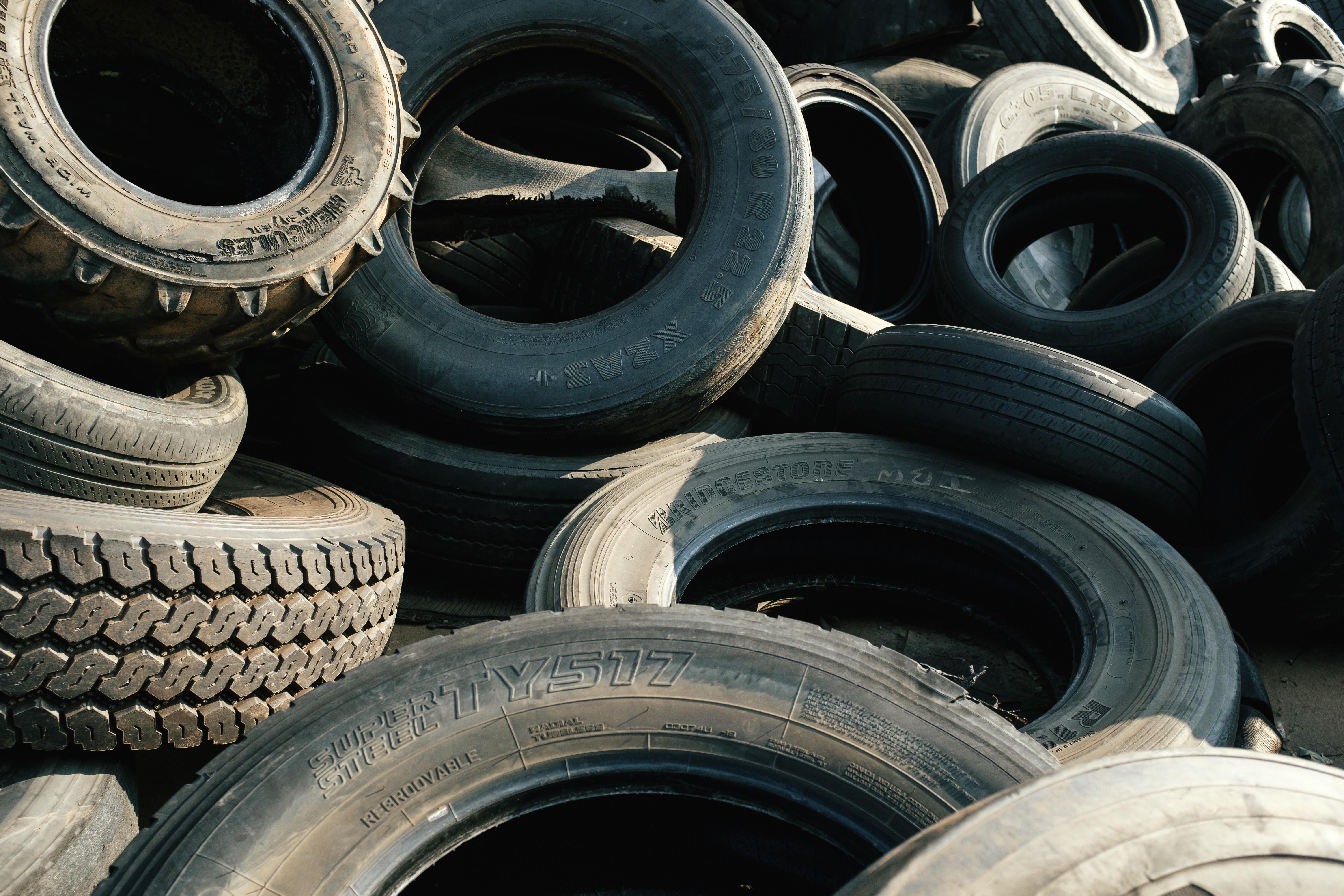
How navan.ai can help you build a model to predict and classify tire texture classification model without having to write a single line of code?
1. Visit nstudio.navan.ai, and sign up using your Gmail id.
2. Choose a suitable model architecture:
- EfficientNet B3 has been pre-trained on large image datasets such as ImageNet, which contains millions of images across thousands of categories. This pretraining allows EfficientNet B3 to learn meaningful features from images and can be fine-tuned on smaller datasets for specific image classification tasks, such as object recognition, scene classification, or medical image analysis.
- It has achieved state-of-the-art performance on benchmark datasets and has been adopted by many researchers and practitioners in the field of computer vision
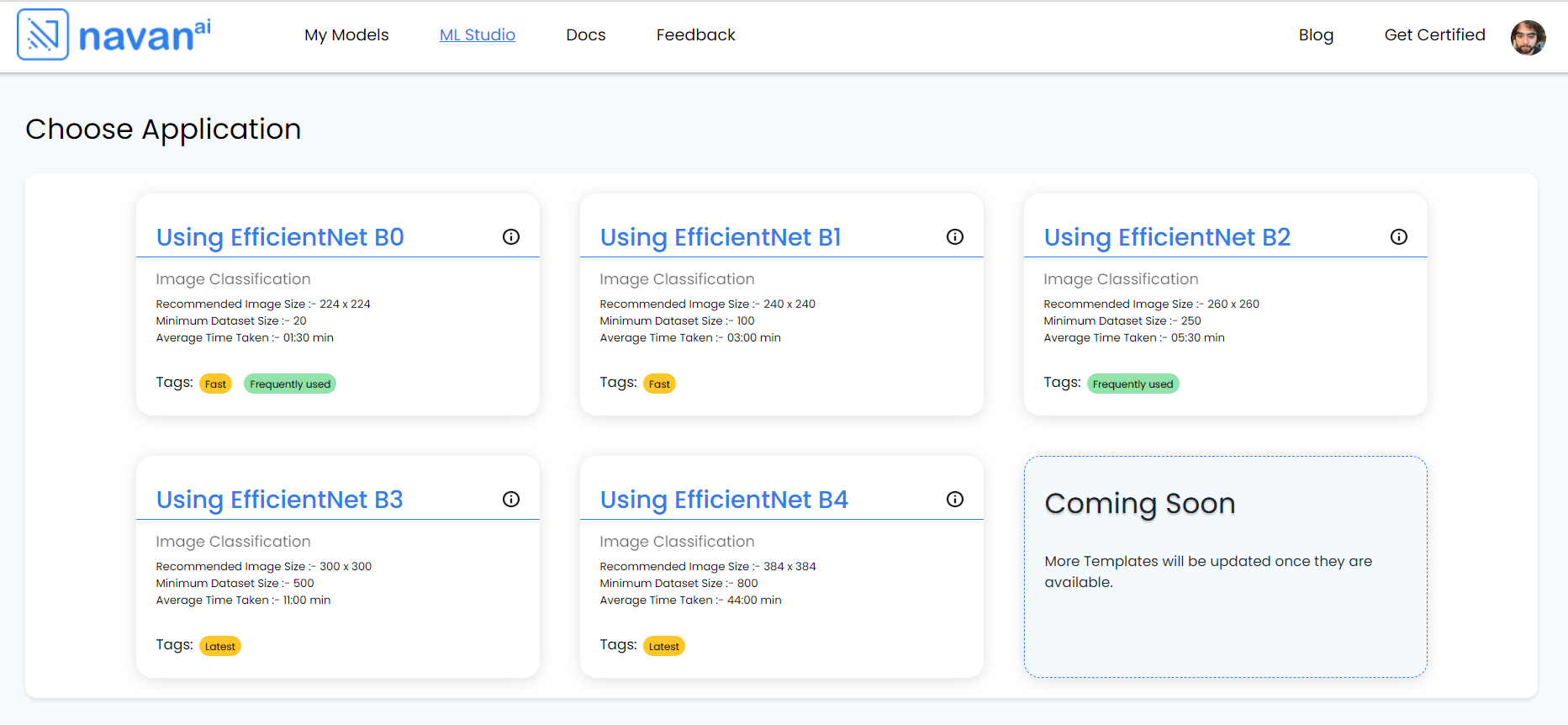
3. Training the model:
we have named the Model “Tire Texture Classification”. We are building 2 classes here
- The images are uploaded to Class 1 [Good Tire]

- The images are uploaded to Class 2 [Bad Tire]

- The next step is to click on the start training button so that the model can be trained.
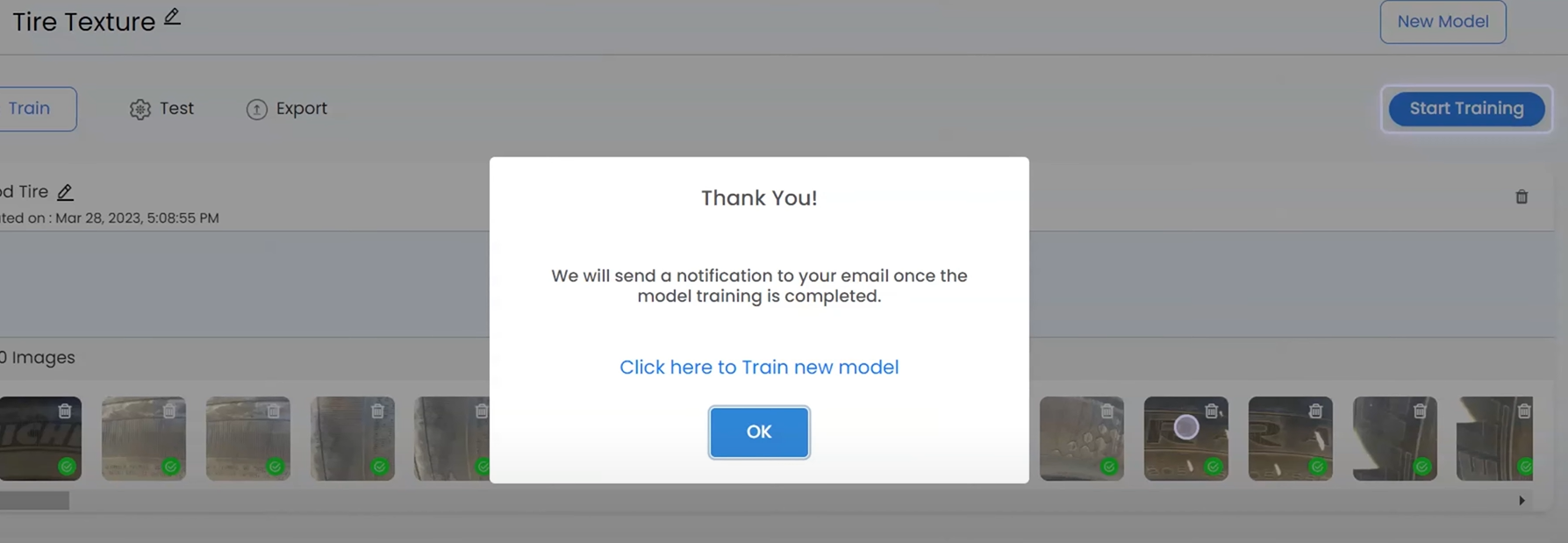
- In the first cycle of training the version 1 metric can be seen
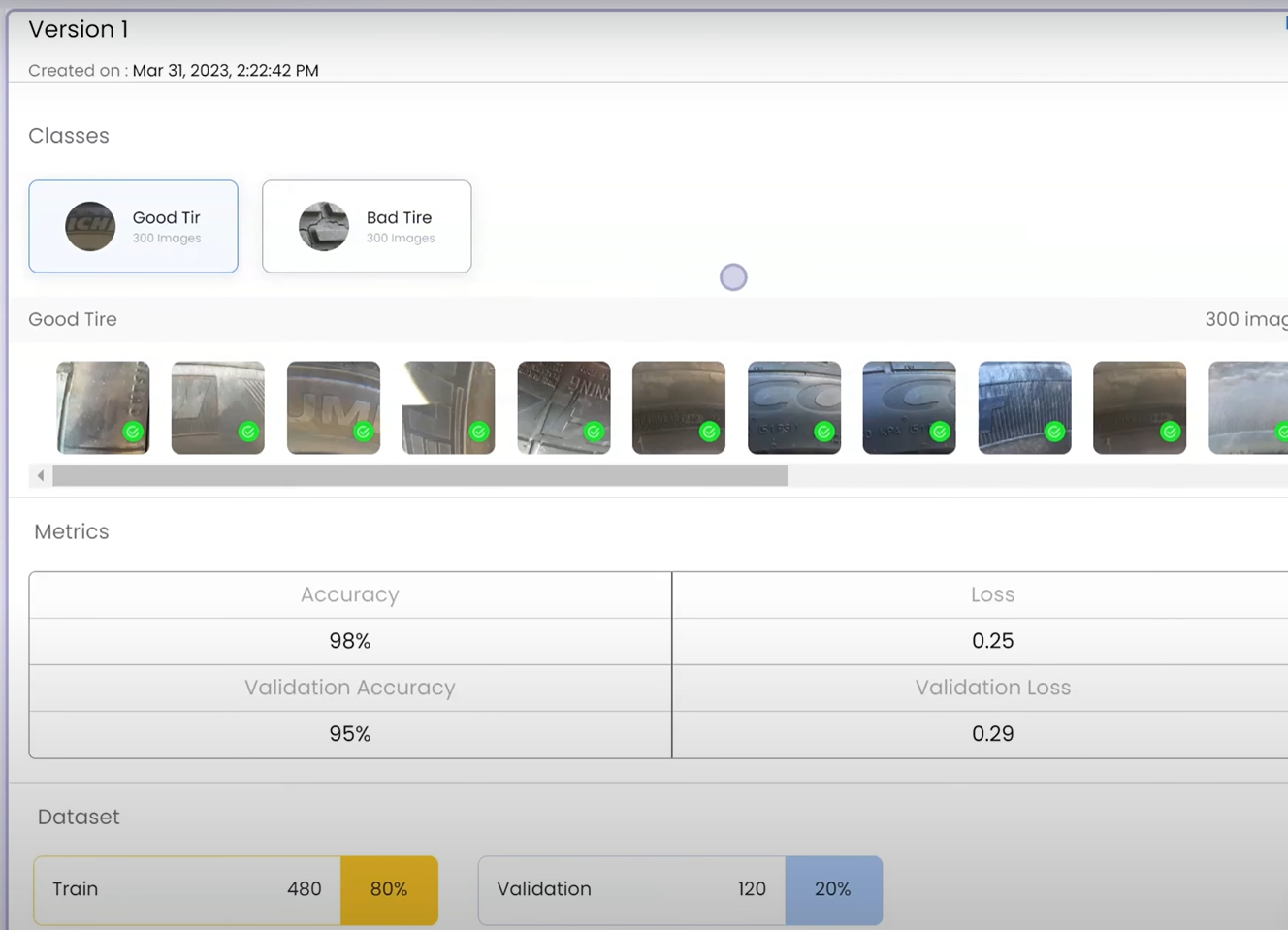
4. Testing the model: Once the Tire Texture Classification model has been trained, the next step is testing the model to see if it performs according to our expectations. It can be evaluated using a separate test dataset to determine its performance and make any necessary adjustments before deploying it in a real-world application.
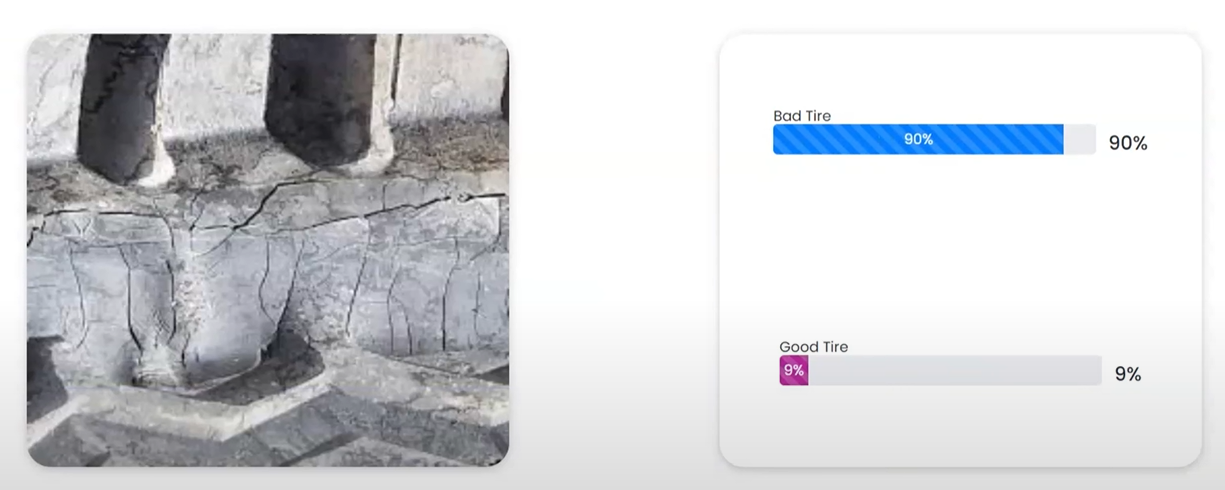
5. Deploying the model: The easiest way to deploy the computer vision model is by using the list of export models on navan.ai. We have 3 options: Deploy a model using Model files, Deploy a model through Docker, and lastly deploy the model as API. You can integrate the model with your application to get a scalable use case and build using your data without coding on navan.ai.
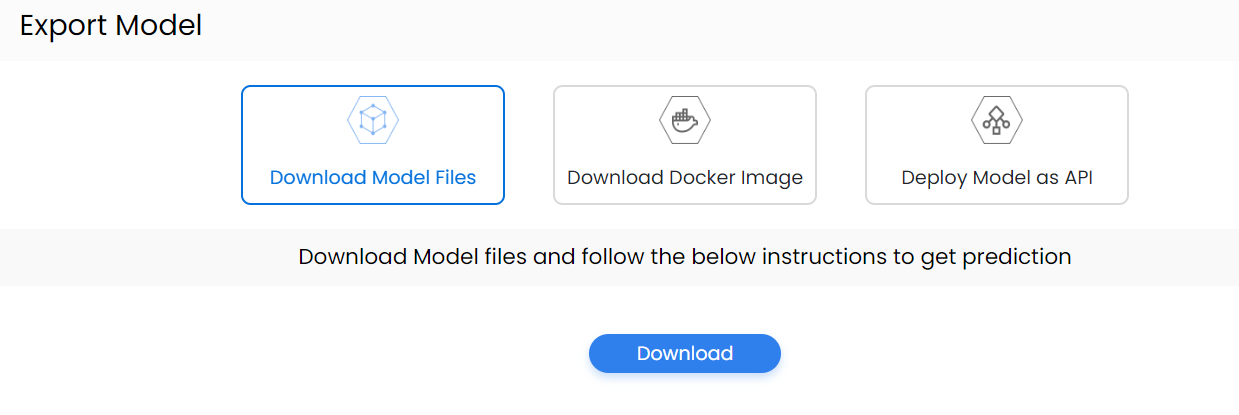
Here’s a video showing how you can build a model to predict and classify wildfire classification model by using Computer Vision AI Model on navan.ai:
navan.ai is a no-code computer vision platform that helps developers to build and deploy their computer vision models in minutes. Why invest 2 weeks in building a model from scratch when you can use navan.ai and save 85% of your time and cost in building and deploying a computer vision model? Build your models, share knowledge with the community, and help us make computer vision accessible to all. navan.ai also helps organizations with deployment by setting up CT, CI, and CD pipelines for ML applications.
Visit navan.ai and get started with your computer vision model development NOW!
